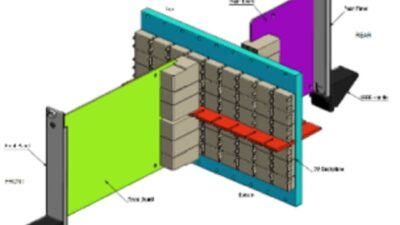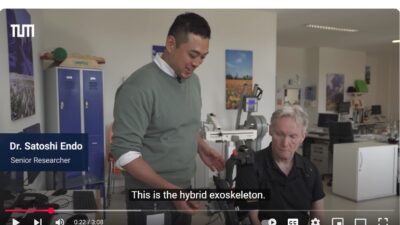Information sharing and integration from the plant floor, among manufacturing sites, upward in the organization and through the supply chain has created real-time, virtual information networks. While that may sound like George Orwell's "Big Brother" is watching us, such monitoring enables smarter decisions, enterprise-wide.
|
Information sharing and integration from the plant floor, among manufacturing sites, upward in the organization and through the supply chain has created real-time, virtual information networks. While that may sound like George Orwell’s “Big Brother” is watching us, such monitoring enables smarter decisions, enterprise-wide.
Major vendors of automation, control, human-machine interface, and other software make information available across and through multiple automation and control systems. In addition to the multilayer interoperability they offer, an emerging class of software pulls information from automation, engineering, planning, and other business segments for decision support throughout and beyond one site or one organization.
A lot of software provides and relays information from and to automation and control engineers, operations, supply-chain partners, equipment vendors/user collaboration, R&D engineers, quality assurance, maintenance, materials, accounting, top management, and cross-departmental teams.
Paper trails persist
With so many systems in place, many still unconnected except by paper trails, who really knows enough to make real-time decisions as demanded by a juiced-up, Internet-pulled supply chain? Software standards help each area’s applications share data and information. However, training multiple departments and cross-functional teams on disparate systems can be impractical. Paper reporting remains the interface among many applications in many locations.
Increasingly, human-machine interface and control software solutions offer easy to understand browser interfaces that provide Ethernet/browser-based connectivity (“Web Technologies Power Automation Interface Software,” CE , July ’00, p. 103). Others provide cross-platform abilities across multiple applications and departments.
Included among emerging players in enterprise-wide monitoring are: eMation (Tel Aviv, Israel; Mansfield, Mass.), IndX (Aliso Viejo, Calif.), Lighthammer Software (Exton, Pa.), and Statware (Corvallis, Ore., part of Camo, Oslo, Norway).
Automation customers
Formerly named PC Soft International, eMation offers Web@aGlance and Web@aGlance/IT. Big names in automation incorporate the latter, such as ABB, Aspen Technology, Fisher-Rosemount, Gensym, GSE, Honeywell, Intellution, OSI, Siemens, Simsci, and Wonderware. (See this article online for more from these sources and on related issues.)
Mike Hajjar, eMation vp North American Operations, says, “Most people can’t fathom the speed at which the Internet is spreading. They may think if they bury their heads in the sand, they’ll be safe, but those who do that won’t survive. We’re helping to bring the Internet to manufacturing so they can bring their best products to customers through smart manufacturing. One immediate application is having devices contact the manufacturer for diagnostics, maintenance, for software upgrades.”
Gregg D. Bauer, senior vp at eMation, says the transition to Internet-enabled manufacturing will go much faster than the touted shift from PLCs to PCs. Why? “Embedding the Internet is enabling manufacturers to do things they couldn’t before.” Such a “massively distributed system,” adds Mr. Hajjar, puts technology at the service of people, rather than the reverse.
Web@aGlance from eMation
Web@aGlance from eMation makes real-time and historical process information available to authorized users through standard web browsers; software is on a web server, providing connectivity to all major SCADA, DCS, and data historian software. Development environment allows fast design and deployment of web applications that provide a graphical view of real-time and historical data. Web@aGlance/IT is multi-platform, client-server technology, allowing, for example, use of a spreadsheet to gather and analyze live process information.
Overwhelming info needs
Elliott Middleton, IndX’s director of product management, says when some companies try to equip every worker with access to every application, training and diverse technical requirements of each system overwhelm users. Web-based solutions trim that to a single application (a web browser), but each application has unique, disjointed, web pages to learn and navigate, he says, “The results are only marginally better than dedicated applications.”
“There are a few dedicated users for every application in the facility, but many more casual, secondary users who benefit from the information those systems contain. Vendors from the control systems arena and from the IT arena have sought to address these needs, but typically struggle to adequately address the differences in tag-based control system and transaction-based information systems.”
Michael Gonzales, IndX’s president, says there’s a big difference in engaging in e-business and becoming one. Becoming an e-business requires knowing everything about all aspects of the operation and knowing it now. Michael V. Brooks, executive vp, says, “Simply putting a storefront on the Internet may only show how bad your internal processes are.”
IndX counts among its customers Aspen Technology, Exxon, Honeywell, GE, Mobil, Neles Automation, and Philip Morris. Partnerships with system integrators yield expertise in industry-specific applications and libraries of drivers. A solution apart from any application space guarantees an enterprise-wide perspective, rather than the “myopic view” from within application browsers, Mr. Brooks adds.
IndX XHQ
XHQ from IndX Software Corp. is a real-time operations web for improving response time, cost, and quality within a manufacturing enterprise. It captures and exposes the right information from all systems to help employees at all levels make real-time decisions, depending on conditions. Without the expense of replicating data, XHQ aggregates information in the proper real-time and historical context and displays it in a browser-based universal client, “using live and visually compelling graphics.” Even nontechnical employees are said to be able to understand and easily drill down for more information. It interfaces proprietary and open systems with drivers, OPC, and DDE, including tag-based systems and relational databases.
Plant versus enterprise
Lighthammer draws a distinction between an enterprise portal , which changes infrequently and provides summarization, and a plant portal , which responds quickly, provides an environment for data correlation, and requires interfaces to many proprietary data structures. Not surprisingly, Lighthammer puts itself in the second category with its Illuminator software.
Rick Bullotta, Lighthammer’s vp and chief technical officer, emphasizes the need for speed in today’s manufacturing environment. “Illuminator aims to relegate the clipboard and data entry terminal for application integration to the trash heap. For information to have value, it must be timely, relevant, accurate, and economical. It is also critical to give end-users a degree of freedom in selecting and analyzing information relevant to job function without requiring complex technical or IT skills.”
“With HMI or SCADA, software has content that’s too detailed or fragmented, while the software seldom can aggregate data from diverse sources to a common user interface,” Mr. Bullota says.
“Our largest competitor, without question, is the ‘do-it-yourselfer,'” explains Mr. Bullota. “However, our ability to enable our users to develop 80% of the application at 20% of the cost of home-grown solutions, along with high value and an aggressive price point, enables us to sell the product to the entire range of potential users.”
Lighthammer Illuminator
Lighthammer Illuminator software extracts data from and delivers to many disparate systems, platforms, and devices, giving plant data a business context. Configuration tools and template editors allow connectivity to browsers, microbrowsers, webphones, Palm Pilots, Microsoft Windows CE devices and others, without scripting or custom code, using Java, XML, and a BizTalk schema. It operates on Windows NT, Windows 2000, Solaris, and Linux, as an “ultra-thin client.” A test drive is available at https://207.8.212.188/vfgmain.htm .
Assessing supplier performance
Statware, as the name implies, began with statistical analysis solutions, then identified a wider solution to assess supplier performance, historically and in real-time.
“A critical issue that must be solved to deploy this is accessing the plant-floor data from suppliers who have vastly different automation systems and different IT capabilities,” says Dan Schober, Statware’s e-product manager. The Internet enables real-time access to supplier information by specifying “simple and consistent web interfaces that each supplier implements to return the requested production information to the customer.” XML is becoming the key technology for formatting data. Security issues are being addressed by establishing virtual private networks (VPNs), authentication, and/or data encryption.
“For large companies that manufacture the same products in multiple locations, sharing plant-floor information is critical to improving the processes across all facilities,” Mr. Schober says.
Static e-QC
Static e-QC web-based, thin-client application software provides information to monitor and make process improvements. It accesses historical or real-time data, features dynamic and broadcast reporting and customized alarming. It runs on Microsoft Windows NT using Microsoft Internet Information Services. Users can view according to predefined parameters or customize as needed.
Top-down praise?
What’s next for these systems? Watch for bidirectional information transfer, first as system integrators fashion point solutions, then as increased functionality is incorporated into the software.
Don’t expect most ceos to open and close valves, but consistently keeping key people informed in real time may earn you praise, maybe a raise, then airfare to a similar plant to share your expertise.
5 STEPS: How to make enterprise-monitoring software work for you
After establishing connections from applications to XHQ enterprise monitoring software, IndX Corp. recommends the following steps. A couple of smart people can do this in a couple of days, depending on the application size, an IndX representative says.
Develop an outline of the informational model on paper.
Develop reusable information components to form the building blocks for the final applications.
Build the model or solution hierarchy.
Configure each instance of the components needed.
Develop different views of information in the components.



